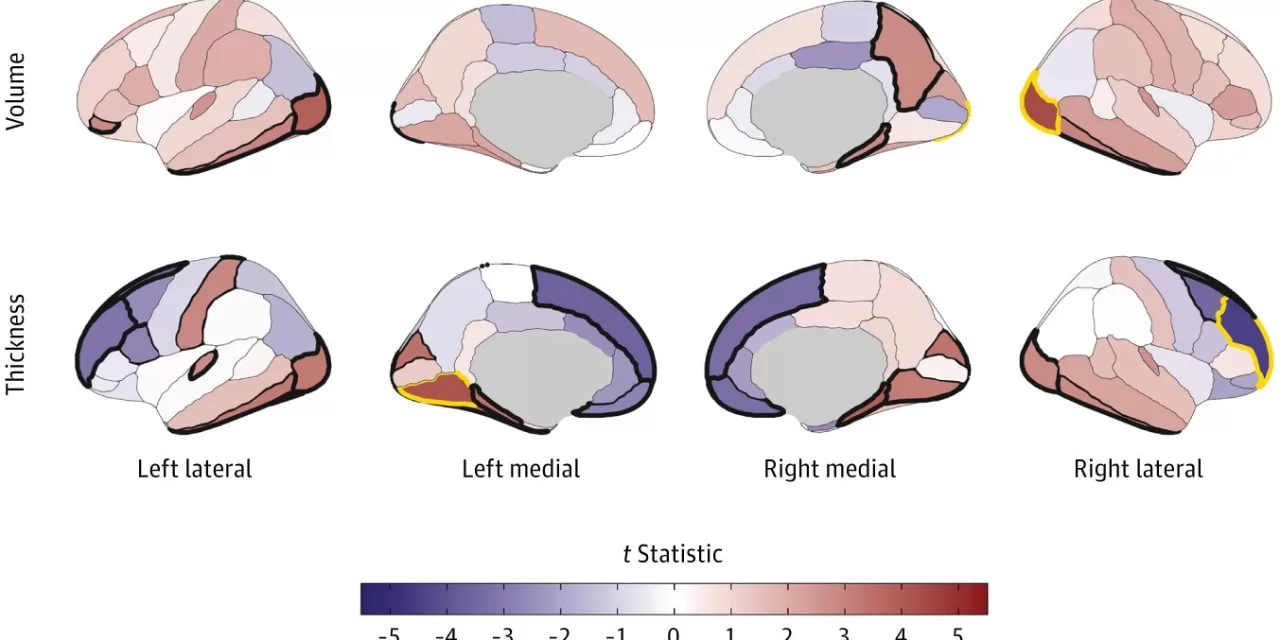Does substance use alter brain structure, or does brain structure predispose individuals to substance use? A groundbreaking study led by researchers from the Indiana University School of Medicine and Washington University in St. Louis has uncovered neuroanatomical differences in children associated with early substance use initiation. The findings, published in JAMA Network Open, challenge long-held assumptions about the relationship between brain development and substance use.
The study, titled “Neuroanatomical Variability and Substance Use Initiation in Late Childhood and Early Adolescence,” analyzed data from the longitudinal Adolescent Brain Cognitive Development (ABCD) Study. Researchers tracked 9,804 participants, aged 8.9 to 11 at baseline, over a three-year period to examine the interplay between brain structure and substance use.
Key Findings
The study revealed that children who initiated substance use—primarily alcohol, nicotine, and cannabis—before age 15 exhibited distinct brain structure characteristics, including:
- Thinner Prefrontal Cortex: Reduced cortical thickness, especially in the rostral middle frontal gyrus, a region linked to decision-making and impulse control.
- Larger Brain Volumes: Greater whole brain, cortical, and subcortical volumes, including larger hippocampal and globus pallidus regions.
- Cannabis-Specific Changes: Reduced right caudate volume was uniquely associated with cannabis use.
Significantly, these neuroanatomical differences were observed in substance-naive children, suggesting they were preexisting factors rather than consequences of substance exposure.
Implications for Understanding Addiction
This study highlights the importance of rethinking causal assumptions in addiction research. The findings suggest that structural brain variability may predispose some individuals to early substance use, marking them as potential risk factors rather than effects of substance use.
An invited commentary by Felix Pichardo and Sylia Wilson from the University of Minnesota emphasized the study’s relevance to addiction models. They noted that the ABCD Study’s large sample size and genetically informative design could reshape our understanding of neural risk factors for substance use.
“Unbiased scientific data provided by studies like this have the potential to yield findings that make us reevaluate our current causal assumptions and how we think about addiction,” they wrote.
Broader Context
These findings align with previous research, including a recent study from Washington University in St. Louis, which found that psychosis symptoms often precede adolescent cannabis use. Together, these studies underscore the importance of early intervention strategies targeting at-risk youth based on identifiable neuroanatomical markers.
Conclusion
This research underscores the complex relationship between brain development and substance use. While more studies are needed to explore these associations further, the current findings provide valuable insights into the neurobiological underpinnings of addiction risk.
Reference:
- Alex P. Miller et al., “Neuroanatomical Variability and Substance Use Initiation in Late Childhood and Early Adolescence,” JAMA Network Open (2024). DOI: 10.1001/jamanetworkopen.2024.52027
- Felix Pichardo et al., “The Adolescent Brain Cognitive Development Study and How We Think About Addiction,” JAMA Network Open (2024). DOI: 10.1001/jamanetworkopen.2024.51997











